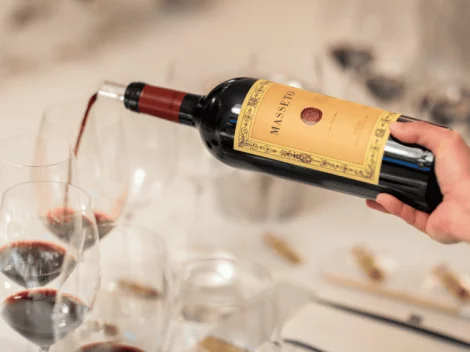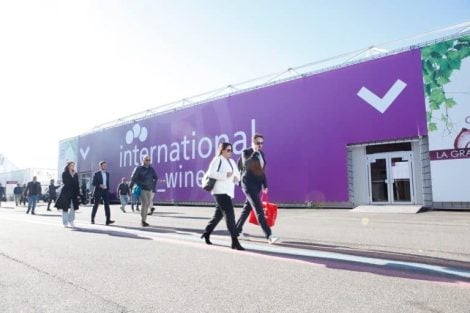"It’s harder nowadays to spot a quality gelateria" says Simone Bonini. What he means is that currently many establishments are attentive to their gelateria’s marketing and interior design, including less quality businesses. "Even the once distinctive carapine (old fashioned sunken gelato tubs with a lid) are no longer an indicator of good ethics" he maintains, in agreement with Alberto Marchetti. A good looking venue attracts but, Bonini adds, "image is not everything, worse is the often imitated refined appearance of a select organic offer". Labels such as "artisanal" are no guarantee that the product actually is. "All these reckless gelato makers need to do is transform their industrial product within their gelateria to call their product artisanal" explains Marchetti "A lot is kept secret, but it would be nice to issue a gelato making ethics register. The future of gelato is in discerning between proper artisanal gelato and not". The need for a disciplinary code is of paramount importance, but finding an agreement is still a long way away, because there are too many voices. Marchetti, in the front lines with his Via del Gelato project under the via Po porticoes at the next Salone del Gusto conference in Turin, however is shortening that distance. The many voices in the decision process are the ones we asked how to best spot quality gelato. And they belong to renowned gelato makers: Alberto Marchetti, Simone Bonini, Marco Radicioni, Claudio Torcé, Corrado Assenza. Their addresses are at the bottom of the page.
The ingredients list
Let’s begin with an evergreen suggestion: "be informed, Internet provides knowledge, find it" says Bonini. Reading the ingredient list is always a good idea. Another is checking that the ingredient list also includes allergens and is posted in plain view, as the law requires. "Otherwise the gelateria is effectively not legally compliant (if not crystal clear on signage, imagine the rest): there’s either something to hide, or the people running the place are amateurs" stigmatises Claudio Torcé. "On the ingredient list, the more letter “E” followed by numbers you find, the quicker you have to leave the place" he continues, sustained by Corrado Assenza. "Same goes for the anti-something". This list is endless: antioxidants, emulsifiers, stabilizing agents, color enhancers. Be wary of ingredients themselves: if there’s more than 20 something’s not right: "we are not food engineers" closes Marchetti. But learning to read is equally important: "for example, someone reading the term inulin may think it is a chemical compound", states Bonini, "when it is actually a vegetable fiber that’s used as a natural thickening agent" and adds: "there has been such lack in food education for so many years, that the people who are actually erudite on the matter are very few".
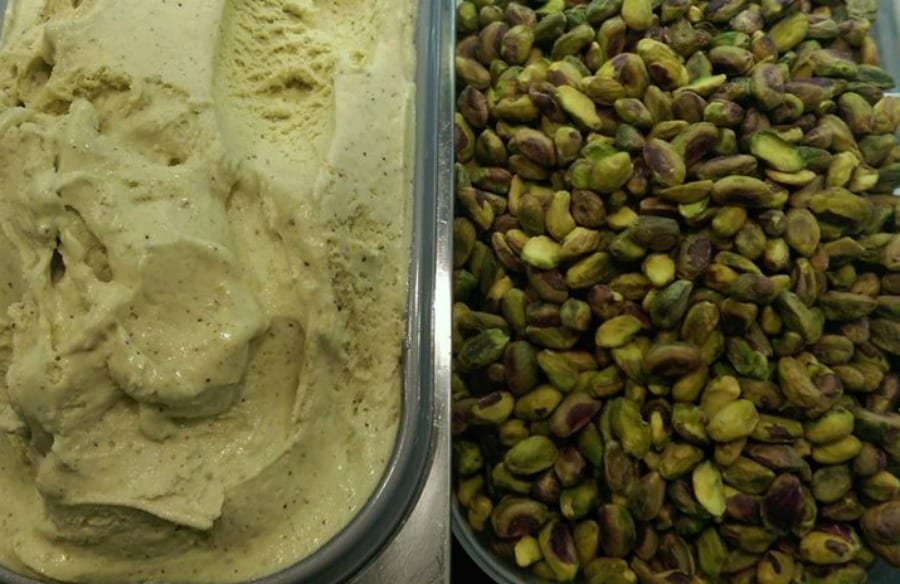
What ingredients?
Speaking of inulin: yes or no? "As an artisan, what do you need inulin for? For super-performance, a little bit like doping in sports" summarises Assenza. "Same goes for citric acid, which is naturally contained in lemon. But one thing is natural lemon juice, another is the acid in crystal form. These are convenient and industrial shortcuts that allow a bigger sales margin". Similarly says Torcé: "We’re always dealing with an element which has been extracted and refined". And in addition: "I’m all for flours. Both carob and guar seed flour are good gelling agents. The rest is all of industrial derivation, like carrageenan (a substance extracted from red and purple seaweeds, consisting of a mixture of polysaccharides). It’s not toxic, but those using it are generally to be considered unprofessional".
And how about dried fruits and nuts? Using whole hazelnuts and pistachios is a gamble: if in a few handfuls of nuts the oil has gone off, you risk ruining an entire production batch. This is one of the reasons – together with the question of space and machinery – why many use nut pastes. "The question is not so much preparing these bases, because very few do" says Bonini "rather choosing genuine and professional suppliers who produce a pure and high quality product. And a difference in price point of hundreds of Euro to the kilo". Some prefer to work from the whole nut meats, like Corrado Assenza, who adopts the pastes only for the hazelnut flavor because of the necessary equipment otherwise needed, "but I’m trying to solve this issue too and make all my own nut bases". What is the best way to avoid compromising an entire batch because of rancid oil in a handful of nuts? "Choosing a good supplier: I’ve been working for two decades with the same person, guaranteed constant quality and pro results. His work ethics reassure me". Similar thoughts are expressed by Claudio Torcé, who also produces his own pastes, albeit considering how "there are extremely high quality pastes on the market. I’m not contrary to all products, only a few of them".
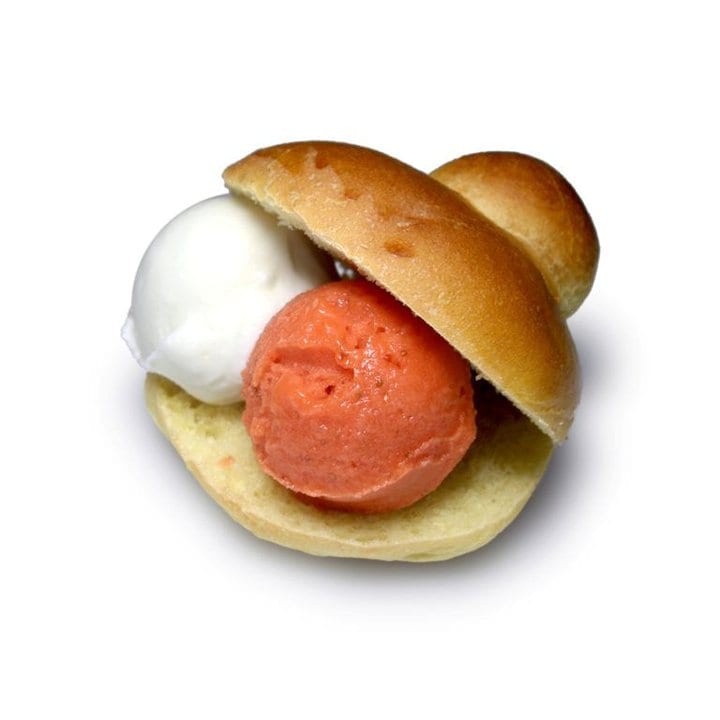
The production and supply chain
Pistachios sourced in Bronte? Impressive, for sure. "But to properly read an ingredients list, it’s necessary to properly track the supply chain" says Alberto Marchetti. "Where does the milk come from, for example? In the case of tiramisu, we also need to know what kind of mascarpone and ladyfingers are being used. When we use pre-mixed compounds, there’s no way of knowing this provenance. In short, be sure to verify as much as possible whether the gelato is made in the sales point and using traceable and recognizable raw ingredients". Not only: if a gelateria is artisanal it will follow its own recipes, and will be able to explain them. "I use 2% powdered milk for texture and a little condensed milk as per Turin tradition. I found a small Perugia producer for that, and it works for me". Sometimes ingredients are sourced at bigger suppliers, like in the case of Gobino chocolate. "We’re happy to work with industries that work in professional manner. They must supply us with ingredients, not finished products. Checking all phases and steps in the supply chain is the only way to guarantee the quality of gelato". We have to be capable of explaining the products, take on the responsibilities of one’s choices and also instruct one’s employees.
Producing from a basei
A slightly different approach is taken in regards to pre-gels and bases, which can be defined as a starting point for gelato making. Some gelato makers produce their own, like Simone Bonini, others purchase the manufactured ready-to-use kind. "My base is milk" says Assenza "to which I then add the rest: eggs, sugar and other ingredients". Pre-gels, especially the purchased kind, are part of an industrial supply chain that envisions production, storage and finally transportation to the various peripheral sales points. "A true artisan begins his gelato making process from fresh, raw materials. Otherwise the artisanal aspect of production is invalidated, as it becomes the final stage of an industrial production chain. In this way the market is contaminated because there is no longer a difference between true artisans and faux ones, and in addition there is no commercial equality".
The situation is different if bases are produced in-house: this is a way to get a head start with the production line adopted by many, including Marchetti until very recently. Nowadays he’s gone back to producing gelato in each one of his gelaterie. This choice was also dictated by financial reasoning: "my employees were eager to learn, so I chose to invest on them rather than on centralized production and transportation. I can't for this reason guarantee an identical product in every shop, also considering each area uses local ingredients. This is being artisanal". In sum, bases are not necessarily harmful, a lot depends on how and where these are made. There is no way of knowing exactly what purchased bases and pre-gels may contain. An industrial product will more likely contain more additives and flattened in flavor, "it’s a shortcut" says Torcé "that makes anyone capable of making gelato, even those incapable". There’s another aspect: "For me the starting point is research" asserts Marco Radicioni "making bases and pre-gels is equal to impoverishing one’s own intelligence, as is using the same recipe without modulating it. I’ve been chasing the ideal gelato my whole life, that’s the whole point and the fun: put the brain in motion, and never stopping. Gelatos will never be the same, and we have to own the courage to explain that to customers".
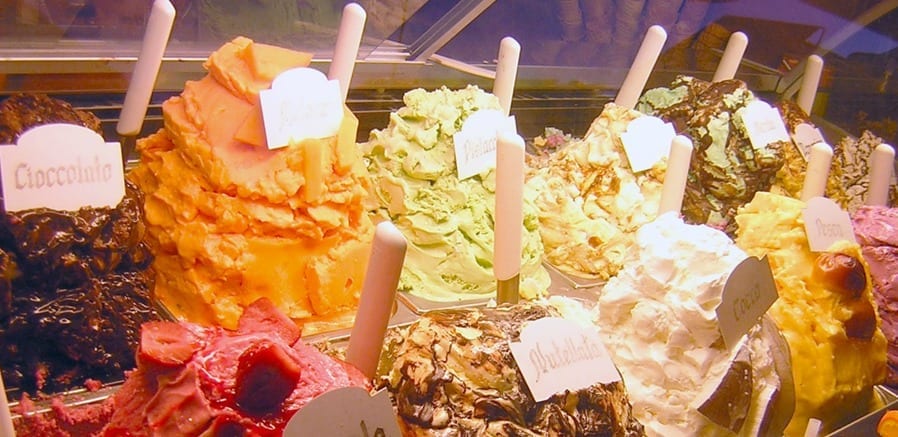
Look at the gelato
Everyone says it: look at the gelato. A strawberry flavor made with powder mixes and pre-gels has an unnatural color, suggests Bonini. Torcé agrees: "you can tell when something is natural and when it’s not, same goes for when a product is fresh and when it’s been on the counter for longer". Take a look at the gelateria counter, the shop and the people working in it. As far as the gelato itself, bright colors and fake looking reveal the use of additives. A brilliant and shiny or opaque and dry appearance will different indicators: "most of the time, evident shiny surface will reveal a high fat content rising, or an excess of substances that form a protective protein film, or even a patina created by additives. On the other hand, an opaque and dry surface is an indicator of a not creamy enough texture, an impoverished gelato made up of lots of water and little else". But don’t be fooled: "some gelaterias melt and re-churn gelato in order to have pristine-looking tubs". Shiny or opaque surfaces speak volumes, but so does excess creaminess or softness, this reveals quantity (and quality) of fats and air present in the blend. There is lots of air incorporated in industrial gelato which tends to be sold by the liquid volume and not by weight. "Hence the low price: you’re actually buying very little product" states unconditionally Corrado Assenza. In addition to this, where there’s too much air incorporated in gelato, it will melt faster. There is no precise timetable, they say: neither too much, nor too little. They all agree in regards to tub volume: "Nothing natural manages to maintain too sculpted and tall like that" says Torcé "those mounds of gelato towering above the chill level are full of fats, monoglycerides and diglycerides, additives, chemically derived emulsifiers that keep fat and water in perfectly mixed balance. These are all elements that give volume and structure to the finished product". An open workshop where production can be witnessed means full transparency and lends insight on productive choices, especially in gelaterias with franchised shops: a topic also addressed at the Gourmet Forum conference. "I really can no longer say what the critical threshold of number of places beyond which it will be impossible to control product quality" says Alberto Marchetti. And the recent decision that Claudio Torcè made in drastically reducing the number of his shops in Rome, is proof of this.
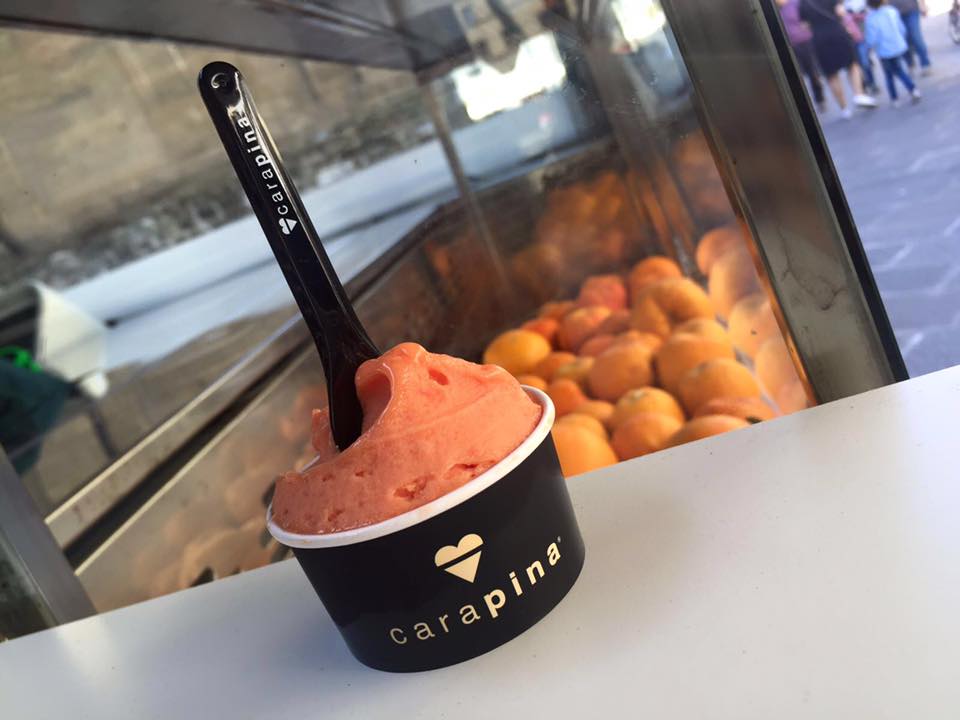
How many and which flavors?
As an ever advocate of making and selling few flavors at a time, Bonini suggests testing a gelateria that only makes seasonal fruit flavors: non-fruit flavors are more adulatory and easily tampered with "instead a bad strawberry remains a bad strawberry". What about exotic fruits? "Those are hard to manage in a shop, it’s virtually impossible to have them available every day" chimes in Corrado Assenza: "one trip to a tropical country is enough to understand that what arrives in Italy is a the fruit equivalent of a cadaver". Seasonal fruit is the choice for Marco Radicioni as well: "Nature gives us a very precise schedule, it makes no sense distorting it. A frozen strawberry is already a non-justified compromise, it could become a model for other options". Making high quality gelato is one that adheres to seasonality like fine dining does, suggests Assenza. "I wish I could find a system to stabilize the strawberry like we do with other stone fruit which can be selected at the perfect ripeness. We blend or chop their pulp to extend their life for a couple of days. We never freeze the fruit because it would not be sustainable energy-wise". Claudio Torcé disagrees, also addressing the topic of how customers can at times be lazy and enslaved by (bad) habits and still asking for blue Smurf flavor gelato.
Be suspicious of too many toppings, says Bonini, "they tend to confuse", rather stick to simplicity "It’s better to pick a ricotta flavor along with a walnut flavor rather than a pre-assembled ricotta-walnut flavor", go for clean flavors "less is better". Assenza asks himself how an artisan can manage many flavors. Radicioni provides the answer: "to make 60 flavors in summer I start working at 3 in the morning. In winter I make many less flavors: the more I sell, the more I produce, not the other way around". Consider that gelato in the house fridge lasts no more than 2 days, like for leftovers and alcoholic beverages.
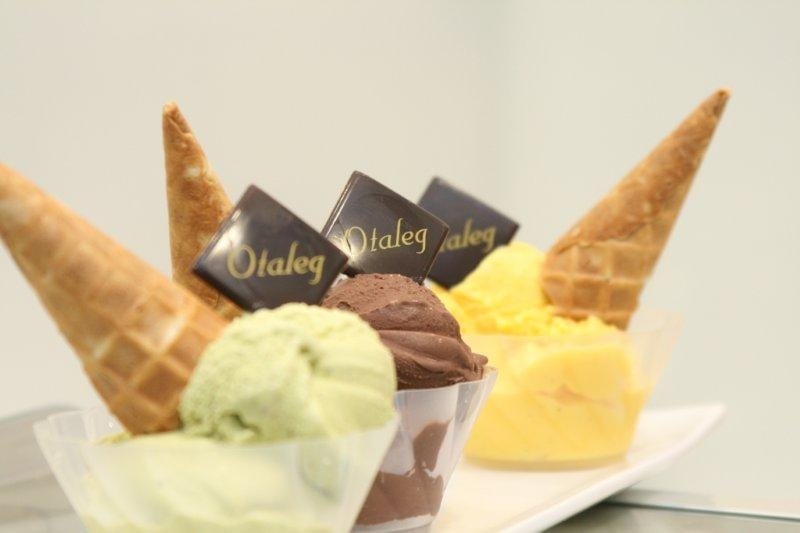
Taste test
Tasting gelato is never enough to test its quality. Personal taste and sweet, attractive flavors seduce the palate: "a little like some chocolate spreads: you may like them, but if you stop to read the label, you choose elsewhere" suggests Marchetti. Flavor is subjective, and so is perception and response to sweet and fatty. The fatty sensation is one that can confuse judgement: "what is generally perceived as heavy cream-like in gelato is actually provided by refined hydrogenated fats, not heavy cream". There are however objective gustatory parameters in tasting gelato that can be coded, says Radicioni, Who knows, someday it could be possible to express "judgement beyond like and don’t like, based on the analysis of volume, temperature, texture, flavor persistence, mouthfeel". Add to this equation a completely subjective factor: emotion. This is lent by the aromas of the ingredients perceived during the making of gelato: "what I remember about gelato as a child is exactly what I want my customers to experience. For this reason I went back to making my gelato in each individual shop" says Marchetti.
Ice crystals
One of the most easily perceived defects of bad gelato is the presence of ice crystals. Is this a preoccupying element? Yes and no. Sometimes it may just be a mere accident "like not properly drying the portioning equipment" reminisce Radicioni and Marchetti, or there can be an issue during the conservation process, especially in sorbets, as Bonini suggests. Bonini himself knows that this can happen with old gelato, or one that’s been kept out of the fridge and has therefore released some condensed water. Radicioni says temperature management also can be culpable, perhaps due to a mechanical malfunction, "like in the case of severe temperature shock, when the pasteurized blend is poured immediately in the churner temps drop from 80/85 degrees Celsius to – 20". It’s not a chance then that he decided to separate these two phases in order to lower the temperature of the blend before pouring it in the churning part of the machinery. Let’s not forget those who re-churn old gelato every day. "In any case" reiterates Claudio Torcé "either it’s a badly made gelato or it’s one that’s been badly kept".
The art of gelato is a topic that still raises many questions, which we still are attempting to resolve. And let’s not forget that an artisan may be working hard at making gelato the right way, but not be very good in the end anyway.
10 golden rules:
1 – Tidiness and cleanliness of the gelateria and its employees are key. These are however not sufficient in identifying a quality product. Same can be said for the shops’ design and self-proclaimed authenticity in terms of artisanal and organic integrity. Don’t let those fool you.
2 – The place where the gelato is actually being made should be clearly visible, implying full transparency and indication of production and ingredient choice.
3 – The ingredient list should be affixed so it is clearly visible and it should list allergens. Best if listing few ingredients, few or no chemical acronyms and elements, and if possible, a fully traceable supply and production chain.
4 – Be wary of unnatural colors and large mounds of gelato towering from the vats: this denotes use of additives and fats.
5 – Gelato that is too shiny or too opaque are two extremes that indicate the presence of additives, excess or surfacing of fatty components, or conversely excess of water at the expense of other ingredients.
6 – Choose fruit flavors, better if seasonal and without toppings, mostly to test the gelateria. Take repeated tests.
7 – pre-gels are not necessarily harmful or bad, they are a shortcut. It depends greatly on who prepares them, if they are industrial, artisanal, produced by the gelato maker himself. Same goes for pistachio, hazelnut and other nut pastes. The rest of the ingredients should be fresh and of extreme high quality, starting with milk. Be informed of the maker’s production choices.
8 – When tasting, consider volume, temperature, texture, flavor persistence, mouthfeel. And be careful in noting the sensation after the gelato has been eaten. It should be pleasant.
9 – If you perceive ice crystals, the gelato has either been badly made or badly kept.
10 – Gelato should lend emotions, like all foods. If it doesnìt, ask yourself why.
by Antonella De Santis
translated by Eleonora Baldwin
Alberto Marchetti | Turin | Corso Vittorio Emanuele II 24 bis | tel. 011.8390879
Alberto Marchetti | Turin | via Po 35 bis
Alberto Marchetti | Turin | Via Reggio, 4/q
Alberto Marchetti | Alassio | via XX Settembre 48
Alberto Marchetti | Milan | viale Montenero, 73 www.albertomarchetti.it
Gelato Carapina | Rome | via dei Chiavari, 37
Gelato Carapina | Florence | via Lambertesca, 18/r | tel. 055.291128
Gelato Carapina | Florence | piazza Guglielmo Oberdan, 2/r | tel. 055676930 http://carapina.it/
Il Gelato di Claudio Torcè | Rome | via dell’Aeronautica 105
Il Gelato di Claudio Torcè | Rome | viale Aventino 59
Il Gelato di Claudio Torcè | Rome | viale Marconi 445 www.ilgelatodiclaudiotorce.com
Otaleg | Rome | via dei Colli Portuensi, 594 | tel. 338 6515450 | http://www.otaleg.com/IT/Home
Caffè Sicilia | Noto (SR) | Corso Vittorio Emanuele, 125 | tel. 0931 835013



 Vinitaly 2025: "Piwi should not be included in the DOCs. Dealcoholised wines? I have changed my mind." Angelo Gaja's position
Vinitaly 2025: "Piwi should not be included in the DOCs. Dealcoholised wines? I have changed my mind." Angelo Gaja's position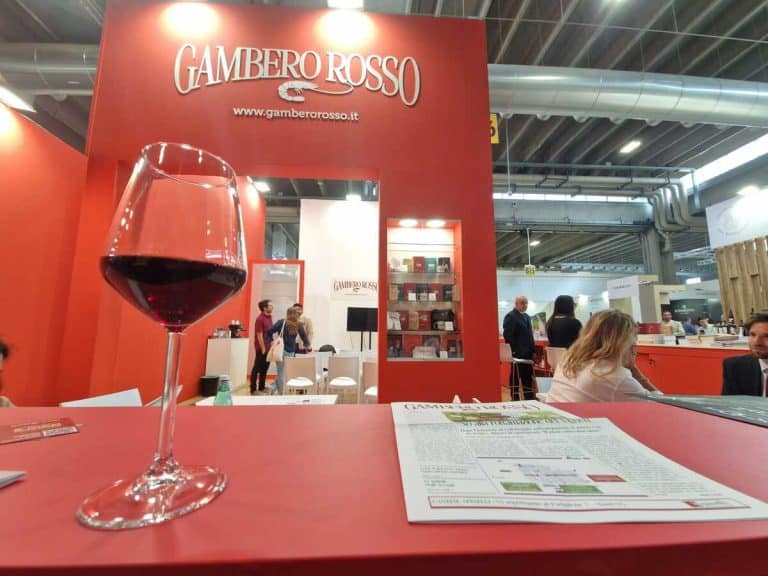 Vinitaly 2025: here are all the events by Gambero Rosso. Tre Bicchieri, debates, TV and much more...
Vinitaly 2025: here are all the events by Gambero Rosso. Tre Bicchieri, debates, TV and much more... A giant rice grown in the land of buffaloes: the story of a bourbon edict
A giant rice grown in the land of buffaloes: the story of a bourbon edict Where to eat in the Majella park, amidst stunning landscapes and authentic cuisine
Where to eat in the Majella park, amidst stunning landscapes and authentic cuisine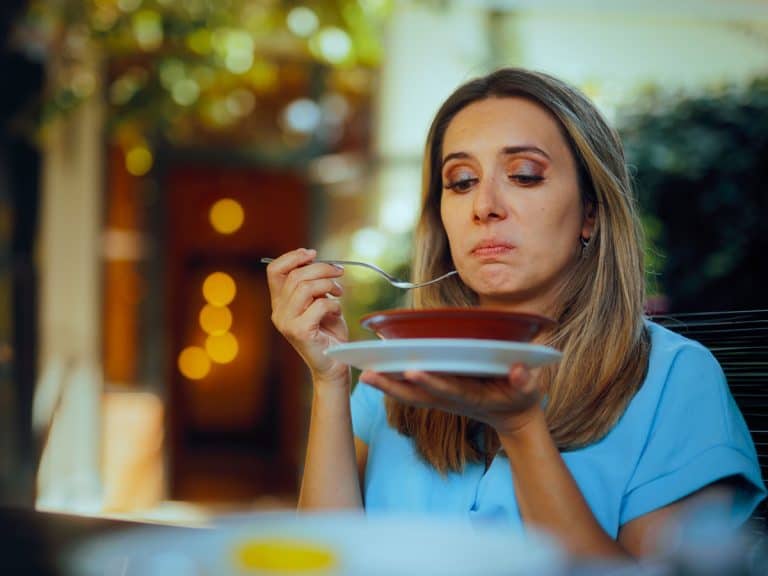 No more identical venues and overtourism food—let’s start again with lunch and trattorias
No more identical venues and overtourism food—let’s start again with lunch and trattorias